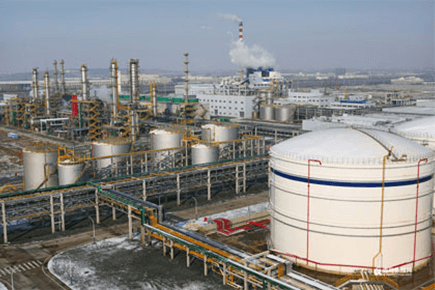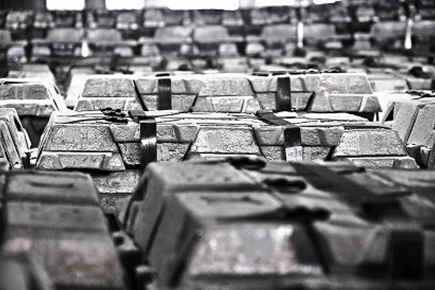
Sunresin—Desalination and Purification Process for Non-Ionic Contrast Media
Contrast media are chemical compounds used in medical imaging. They are typicall administered by injection in the human body. These organic media have higher or lower density compared to the surrounding tissues, thus allowing the contrast to be visualized by imaging devices. For example, iodine preparations and barium sulfate are commonly used for X-ray observation.
Contrast media are primarily employed for visualizing blood vessels and body cavities and are common used agents in interventional radiology. There are two types on of contract media: non-ionic and ionic. Non-ionic contrast media, due to their lower toxic side effects, are widely preferred and commonly used in angiography and transvascular contrast examinations.

Desalination and Purification in Nonionic Contrast Media Production:
In order to ensure the production of high-purity final products, desalination and purification play a critical role in the manufacturing process of non-ionic contrast media. These steps are essential for the removal of salinity, impurities, organic residues, trace metal ions, and solid impurities. By effectively eliminating these contaminants, the desalination and purification processes contribute to enhance the purity and quality of the contrast media. Furthermore, this specific purification procedure helps to reduce adverse reactions and side effects on patients during subsequent applications.
Furthermore, desalination and purification processes ensure that non-ionic contrast media meet the requirements set by international pharmacopoeias and drug regulatory agencies. This mandatory purification ensures an improved quality, safety and medicinal properties of the contrast media, thereby reducing the likelihood of adverse reactions.
Common Processes for Desalination and Purification:
Various methods can be used to achieve desalination and purification in the production of contrast media. The selection of these methods depends on the type, composition, and production requirements of the contrast media. The commonly used processes include:
1. Membrane Filtration: Membrane filtration utilizes separation technology to remove solid particles, impurities, macromolecules, suspended matter, and microorganisms from the solution. Different types of membranes, such as reverse osmosis, ultrafiltration, and microfiltration membranes, can be chosen based on the desired desalination effect.
2. Reverse Osmosis: Reverse osmosis is a desalination technique that separates solutes and solvents in a solution through a semi-permeable membrane. High pressure is applied to drive the solvent through the membrane, while ions and impurities in the solute and solvent are retained, effectively removing salts and other solutes from the solution.
3. Ion Exchange Method: Ion exchange is a widely used desalination and purification method. It involves the use of resins or gel materials with ion exchange capabilities to selectively adsorb and release ions in the solution, thereby removing salts and other impurities. The ion exchange method can be customized as cation exchange or anion exchange, depending on the requirements.
4. Chromatographic Desalination Process: The chromatographic separation technology is utilized to eliminate inorganic salts, pigments, and other impurities from the feed solution. The separated extract is further purified using refining resins to ensure effect.
Application case: Iodixanol purification:
Iodixanol Purification: The purification process was developed by Sunresin. After conducting numerous laboratory experiments and pilot tests in the initial stages, the Seplife® LX-series chromatographic resin was selected for loading. The DAC1000 industrial preparative chromatography system was chosen for the separation process.
Through optimization and process debugging, the chromatography system achieved a yield of over 90% and a purity of over 99.8% in automatic mode. The results obtained in production were consistent with those from the laboratory experiments. The DAC1000 industrial chromatography equipment offers the flexibility to switch between manual and automatic modes, catering to the specific production needs of customers.
DAC Industrial Preparative Chromatography:

DAC preparative chromatography is an efficient technique for sample separation. It utilizes the dynamic axial compression (DAC) column, which enables higher theoretical plate counts and narrower peak widths during the separation process. This enhances separation efficiency and peak capacity. When combined with Sunresin chromatographic separation resins, it delivers superior separation results and is capable of separating complex mixtures effectively.
Advantages of Chromatographic Separation Equipment:
1.Rapid Separation: The DAC technology provides a distinct advantage in terms of rapid separation. By utilizing compression constraints within the DAC system, the length of the separation column can be significantly reduced. This allows DAC columns to complete the separation process in a much shorter time compared to traditional chromatographic columns. As a result, analytical efficiency and sample throughput are improved.
2.Wide Sample Adaptability: DAC technology exhibits excellent adaptability to a wide range of compounds and resins . DAC columns can be packed with various types of packing materials, making them suitable for the separation of compounds with different molecular weights, as well as liquid and solid phase separations. This versatility enables their application in diverse analytical scenarios.
3. Lower Sample Consumption: DAC technology effectively combines high separation efficiency with low sample consumption. Due to the exceptional separation efficiency and peak capacity offered by DAC columns, the required sample can be significantly reduced. This feature proves especially valuable for analyzing compounds with limited availability or high costs.
4. High Stability and Repeatability: DAC columns demonstrate remarkable stability and repeatability. The axial compression forces within the DAC system minimize pile up effect and eccentricity of column, thus enhancing column stability and the reproducibility of separations. This results in more reliable and consistent outcomes.















